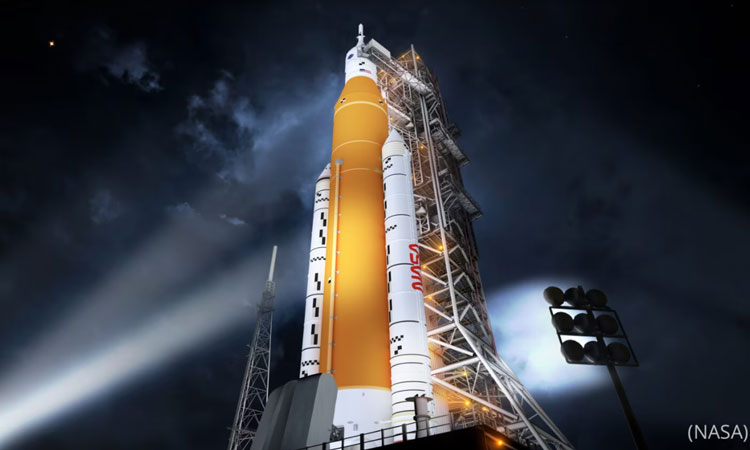Humanity has always looked to the stars with wonder and curiosity, viewing them as both an enigma and a frontier to conquer. From the Apollo missions that first put humans on the Moon to the International Space Station (ISS), our exploration of space has been marked by significant milestones. Now, as NASA’s Artemis program leads the charge to return humans to the Moon, the horizon of space exploration stretches far beyond our natural satellite.
This article delves into the future of space exploration, examining what comes after Artemis, the feasibility and challenges of Mars colonization, and the pivotal role private companies are playing in shaping humanity’s cosmic destiny.
Artemis: The Gateway to a New Era
The Artemis program, spearheaded by NASA, represents the next giant leap for human space exploration. Its primary goals are to establish a sustainable human presence on the Moon by the late 2020s and lay the groundwork for future missions to Mars. Artemis I, an uncrewed mission, successfully demonstrated the capabilities of NASA’s Space Launch System (SLS) rocket and the Orion spacecraft. Artemis II, scheduled for 2024, will carry astronauts around the Moon, while Artemis III aims to land the first woman and the first person of color on the lunar surface in 2025.
But Artemis is more than a series of missions. It’s a stepping stone to deeper space exploration. By leveraging the Moon’s resources, including water ice in its south pole, NASA hopes to develop technologies and infrastructure for long-term space travel. The Lunar Gateway, a space station orbiting the Moon, will act as a staging point for lunar operations and a testing ground for systems intended for Mars.
Mars: Humanity’s Next Frontier
While the Moon offers an immediate and relatively accessible target, Mars remains the ultimate destination for human exploration. With its similarities to Earth—such as day length, polar ice caps, and seasons—Mars has long captured the imagination of scientists and dreamers alike. However, turning Mars from a dream into a reality presents formidable challenges.
1. Technological Challenges
Sending humans to Mars involves overcoming significant technological hurdles. These include:
- Radiation Exposure: Unlike Earth, Mars lacks a protective magnetic field. Astronauts traveling to and living on Mars would be exposed to high levels of cosmic radiation, which could increase cancer risks and other health issues.
- Life Support Systems: Developing self-sustaining systems for air, water, and food will be crucial for long-term missions. While some experiments, such as growing plants in simulated Martian soil, have shown promise, much work remains.
- Transport and Entry: Mars’s thin atmosphere complicates landing heavy payloads, as traditional parachutes may not suffice. Innovations in landing technologies, such as retropropulsion, are essential.
2. Mars Base and Colonization
Establishing a permanent human presence on Mars requires an outpost capable of supporting life. Initial missions will likely involve habitats pre-deployed by robotic systems, using advanced materials to withstand the planet’s extreme temperatures and dust storms.
In-situ resource utilization (ISRU) will play a vital role in colonization efforts. For example, extracting water from underground reservoirs could provide drinking water, oxygen, and hydrogen for fuel. Similarly, utilizing Martian regolith to create building materials could reduce reliance on Earth-based supplies.
3. Psychological and Ethical Considerations
Mars colonization raises psychological and ethical questions. How will astronauts cope with the isolation, confined spaces, and the vast distance from Earth? What governance structures will be implemented to ensure fair and ethical decision-making in a Martian society? Addressing these questions is as critical as solving the technical challenges.
The Role of Private Companies
The privatization of space exploration has revolutionized the industry, introducing innovation, reducing costs, and accelerating timelines. Companies like SpaceX, Blue Origin, and Boeing are no longer merely contractors for government agencies but key players shaping the future of humanity in space.
1. SpaceX: Leading the Charge to Mars
Elon Musk’s SpaceX has emerged as a leader in the race to Mars. Its Starship spacecraft, designed for interplanetary travel, aims to transport humans and cargo to the Red Planet. With successful test flights and ambitious plans for a Mars colony, SpaceX envisions making life “multiplanetary.”
SpaceX’s collaboration with NASA on the Artemis program further cements its role in the space exploration ecosystem. The company’s Human Landing System (HLS) will ferry astronauts from lunar orbit to the Moon’s surface during Artemis III.
2. Blue Origin and the Vision of Space Habitats
Jeff Bezos’s Blue Origin is pursuing a vision of space colonization centered on orbital habitats. Inspired by physicist Gerard K. O’Neill’s concept of massive space stations, Bezos envisions a future where millions of people live and work in space. The company’s reusable rockets, such as New Shepard and New Glenn, are steps toward this goal.
3. Other Key Players
- Boeing: With its CST-100 Starliner spacecraft, Boeing is focusing on crewed missions to the ISS and beyond.
- Rocket Lab and Relativity Space: These companies are developing cost-effective small satellite launches and innovative technologies, such as 3D-printed rockets.
Private-sector involvement not only drives competition but also democratizes space access, with companies offering commercial space tourism and scientific payload delivery services.
Beyond Mars: Ambitions in Deep Space Exploration
While Mars dominates current discourse, other destinations are on humanity’s radar.
1. Asteroid Mining
Asteroids contain valuable resources, such as rare earth metals and water, that could fuel future space economies. Companies like Planetary Resources and NASA’s OSIRIS-REx mission are exploring the feasibility of asteroid mining.
2. Europa and Enceladus: Search for Life
Jupiter’s moon Europa and Saturn’s moon Enceladus, both of which have subsurface oceans, are prime candidates in the search for extraterrestrial life. NASA’s Europa Clipper mission, set to launch in 2024, will investigate Europa’s habitability. Similarly, future missions to Enceladus could explore its water plumes for signs of microbial life.
3. Interstellar Exploration
Projects like Breakthrough Starshot aim to send tiny, laser-powered spacecraft to nearby star systems, such as Alpha Centauri, within a generation. Though ambitious, interstellar exploration represents the next logical step in humanity’s cosmic journey.
International Collaboration and Space Governance
As space exploration intensifies, international collaboration and governance become increasingly vital.
1. Collaboration
The Artemis Accords, an international agreement led by NASA, promote peaceful and cooperative exploration of space. Countries including Canada, Japan, and members of the European Space Agency (ESA) are contributing to Artemis missions, while emerging space nations like India and the UAE are advancing their own programs.
2. Governance
The Outer Space Treaty of 1967 establishes guidelines for space activities, but it requires updates to address modern challenges, such as resource extraction and space traffic management. Developing equitable policies will be crucial to preventing conflicts and ensuring sustainable exploration.
Space Exploration and Society
Space exploration has far-reaching implications for society, inspiring scientific innovation, economic growth, and cultural imagination.
1. Technological Advancements
Technologies developed for space exploration often find applications on Earth. Innovations in robotics, materials science, and telecommunications have transformed industries, from healthcare to transportation.
2. Economic Opportunities
The space economy, currently valued at over $400 billion, is expected to reach $1 trillion by 2040. Industries such as satellite communications, space tourism, and resource extraction will drive this growth, creating jobs and investment opportunities.
3. Cultural Impact
Space exploration has always captured the human imagination, from Jules Verne’s From the Earth to the Moon to modern films like Interstellar. As humanity ventures further into space, these stories will continue to inspire new generations of dreamers and innovators.
Conclusion
The future of space exploration is as vast and limitless as the cosmos itself. From returning to the Moon with Artemis to the audacious goal of Mars colonization, humanity is poised to redefine its relationship with the universe.
Private companies, international collaborations, and advances in technology are accelerating progress, while the ethical and societal implications of space exploration demand thoughtful consideration. Beyond the technical challenges, the true spirit of space exploration lies in its ability to unite humanity in the pursuit of knowledge, discovery, and a shared destiny among the stars.
As we stand on the cusp of interplanetary exploration, one thing is certain: the journey into the cosmos is just beginning. The question is not whether we will explore the universe, but how far we will go and what we will discover along the way.





